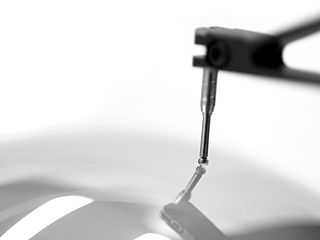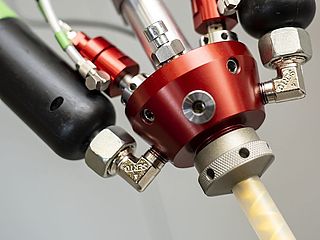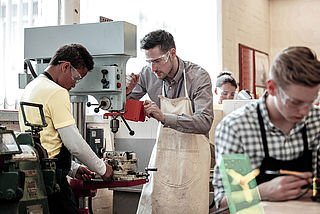
High-quality metrology for quality control in the measuring room, production, incoming goods and development.
Gear Metering Pumps & Meter Mix Dispense Machines with highest accuracy for processing liquids and pastes.
High-precision rotary stroke bearings for backlash-free linear and rotational movements for use in machine and device construction.








Innovative metrology for a wide range of applications:
- • Length and diameter
- • Surface and contour
- • Form and position
- • Gears and shafts

Precise mixing and metering of liquids and pastes:
- • Gear metering pumps
- • Pumps for fiber production
- • Meter mix dispense machines as well as mixing heads

Rotary stroke bearings for backlash-free linear and rotary movements in:
- • Mechanical engineering
- • Precision engineering
- • Optik
- • Electronics
- • and many other industries








As an internationally active company, Mahr holds its patents not only in Germany, but worldwide.
3D measuring devices in medical technology

Surfaces increasingly have to exhibit special properties. This is particularly true for medical technology: Implants and prostheses are precisely ground to produce specific roughnesses or smoothnesses. Only in this way can the artificial replacement enable natural movement.
Webinar with practical relevance
In his presentation, Christopher Wallmann first classifies the various measurement technologies - white light interferometry, confocal microscopes and profilometry - explains their advantages and properties, and highlights Mahr's range of 3D measuring instruments.
However, one focus of his presentation is on the concrete practical relevance: The 3D measuring instruments are used, among other things, for the standard-compliant roughness measurement of catheters, tubes, tools, stents, biosensors as well as joint implants and dental implants. The best thing is to take a look for yourself:
Confocal thread measurement
Using dental implants as an example, Wallmann demonstrates a measurement of thread geometry using a confocal system. On the thread, the geometry including the distances is recorded in a measuring range between 300 and 400 micrometers. "You can also use it to look at texture direction, for example, or to check load-bearing components to make sure that the specifications of the implants are met," Wallmann explains. The geometry measurement of the implant can be recorded areally, as another measurement example shows. The confocal microscope can also be used to measure the topography of crowns, for example to check their wear. Knee joints also play a major role in medical technology, as the trade fair expert explains: On this largest human joint, it is a matter of highly polished surfaces, where roughness measurements with repeat accuracies of <0.2 nanometers are required.
Other industries in which Mahr's measurement technology is used include the automotive industry, and here in particular the areas of car bodies and engines, as well as in materials science, electronics, the semiconductor industry, and in printing and security systems.
Further information
- You want to know more about working on dental implants? Read this article.
- Would you like to contact us? Send us an email at info@mahr.com or use the contact form.
